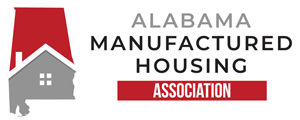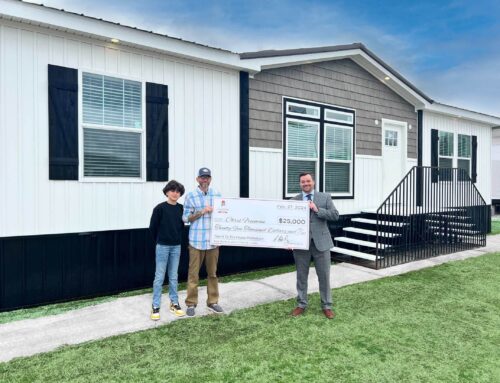
Winter Inspection Checklist for Manufactured Homes
During the summer months, you want your home to be as open and airy as possible, keeping you, your family, your pets and your belongings conditioned, cool, healthy and comfortable. During the winter months, the goals becomes much the opposite. It should become somewhat of a fortress; a secure place where no winter weather will be able to make its way inside.
There are several things that need to be done, and several steps that can be taken even before the temperatures really being to plummet, to make sure your manufactured home is ready for the cold weather that is coming.
Outdoor Checkpoints
Manufactured Home Skirting
It’s always important to check the skirting on your manufactured home — that’s the siding that is installed around the area beneath the floor — and a good time to do so is right before the winter season. Skirting acts as an insulator for your entire home, so be sure to check the entire lining of the skirt for any damage or holes to the product. Animals might try to find shelter under your manufactured home and storms throughout the year could have kicked debris and rubble underneath the lining, so any areas of concern in your skirting might need to be fixed or replaced to ensure that it is ready to provide maximum protection and efficiency throughout the winter season
Windows
If the windows on your home are not properly sealed, they could be a major site for heat escape during the winter months, resulting in a loss of warmth for your home and money from your wallet.
To ensure that your home’s windows are properly sealed for the winter season, place your hand around the window frame and feel for the airflow during a windy day. Use caulk to seal around the frame or use a plastic window insulation kit to cover an entire window. Be sure also to properly cover any window air conditioning units fully and carefully as to not let air flow through them during the winter months. Heavy curtains will also help keep more heat from escaping from windows. It may sound simple, but make sure all the windows in your home are closed and latched.
Gutters
Cleaning the gutters on your manufactured home is a crucial part of the winterization of your home as it will keep the water flowing and prevent ice from backing up to the roof during the winter months. If ice were to back up to the roof, the interior ceiling could be severely damaged. We further suggest potentially mounting leaf-guards on the gutters and adding extensions to the downspout as this directs water away from the home to avoid the additional potential of flooding.
Doors
Check all of the doors on your manufactured home for cracked or worn weather stripping and replace them as needed. When you touch the inside surface of the door, you should not be able to feel the exterior’s cold. If you are able to, then your door might lack the adequate insulation. You should consider upgrading the door with a replacement that is more energy efficient.
Roofing
Check your manufactured home’s roof for any potential holes, leaks, or other damage areas that that might need to be repaired.
Indoor Checkpoints
Heating System
Have your manufactured home’s furnace inspected by a professional to make sure it is running efficiently and that your ducts are sealed properly.
Have you considered checking up on and changing your furnace’s thermostat? These days there are even thermostats that connect directly to your smartphone, allowing you to control your home’s heat settings when you’re away. Investing in an energy-saving thermostat is a cost-effective measure so you can save for other home repairs.
Water Lines
Water lines should be protected by wrapping them with an approved heat cable. Install the heat cable per the manufacturer’s instructions. At the beginning of cold weather, check to be sure heat tapes are plugged in and in good working condition. If you are planning on being away for an extended period of time, it is best to shut off water supply completely.
Home Detectors
Winter brings an increased risk of home fires and carbon monoxide leaks. Make sure you and your family are protected by replacing the batteries in your smoke detectors and carbon monoxide detectors and ensure that any and all home detectors are in working order and are operating without any issues. Replace any detectors that are over 10 years old with newer models.
Plumbing
Be sure to check all your plumbing and pipes to make sure there are no areas that are open to the cold. The last thing you want is a pipe bursting in the freezing weather.
Take some extra measures to winterize your pipes with added insulation. This will give your plumbing some additional protection, especially if you go on an extended vacation during the colder months of the year when the pipes will go for a prolonged time with little to no use.
For more information on manufactured homes, visit our industry news page where we share insights on a multitude of topics related to manufactured homes including financing, home security, weather, design tips, and much more.






